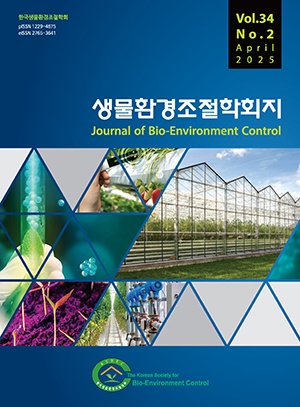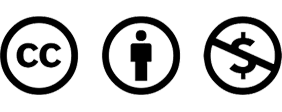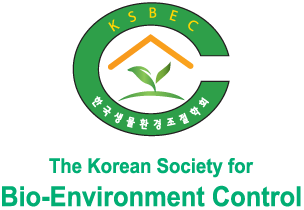Original Articles
Arif Y., F. Sami, H. Siddiqui, and A. Bajguz 2020, Salicylic acid in relation to other phytohormones in plant: A study towards physiology and signal transduction under challenging environment. Environ Exp Bot 175:104040. doi:10.1016/j.envexpbot.2020.104040
10.1016/j.envexpbot.2020.104040Bhattachrya A. 2022, Effect of low temperature stress on photosynthesis and allied traits: A review. In A Bhattacharaya, ed, Physiological processes in plants under low temperature stress. Springer, Singapore, pp 199-297. doi:10.1007/7/978-981-16-9037-2
10.1007/978-981-16-9037-2_3Bradford M.M. 1976, A rapid and sensitive method for the quantitation of microgram quantities of protein utilizing the principle of protein-dye binding. Anal Biochem 72:248-254. doi:10.1005/abio.1976.9999
10.1006/abio.1976.9999942051Buchanan B.B., and W. Gruissem 2000, Biochemistry and Molecular Biology of Plants. American Society of Plant Physiologists, p 150.
Cheng F., J.Y. Lu, G. Min, S. Kai, Q. Kong, Y. Huang, and Z. Bie 2016, Redox signaling and CBF-responsive pathway are involved in salicylic acid-improved photosynthesis and growth under chilling stress in watermelon. Front Plant Sci 7:1519. doi:10.3389/fpls.2016.01519
10.3389/fpls.2016.01519Dempsey D.A., A.C. Vlot, M.C. Wildermuth, and D.F. Klessig 2011, Salicylic acid biosynthesis and metabolism. Arabidopsis Book 9:e0156. doi:10.1199/tab.0156
10.1199/tab.015622303280PMC3268552Ding Y. 2018, Progress of plant response to low temperature stress and research methods. Jiangsu Agric Sci 47:31-36. doi:10.15889/j.issn.1002-1302.2019.14.007
Ding Y., and S. Yang 2022, Surviving and thriving: how plants perceive and respond to temperature stress. Dev Cell 57: 947-958. doi:10.1016/j.devcel.2022.03.010
10.1016/j.devcel.2022.03.01035417676Dong C., L. Li, Q. Shang, X. Liu, and Z. Zhang 2014, Endogenous salicylic acid accumulation is required for chilling tolerance in cucumber (Cucumis sativus L.) seedlings. Planta 240:687-700. doi:10.1007/s00425-014-2115-1
10.1007/s00425-014-2115-125034826Farmer E.E., and M.J. Mueller 2013, ROS-mediated lipid peroxidation and RES-activated signaling. Annu Rev Plant Biol 64:429-450. doi:10.1146/annurev-arplant-050312-120132
10.1146/annurev-arplant-050312-12013223451784Ganesan V., and G. Thomas 2001, Salicylic acid response in rice: influence of salicylic acid on H2O2 accumulation and oxidative stress. Plant sci 160:1095-1106. doi:10.1016/S0168-9452(01)00327-27
10.1016/S0168-9452(01)00327-211337066Gill S.S., and N. Tureja 2010, Reactive oxygen species and antioxidant machinery in abiotic stress tolerance in crop plants. Plant Physiol Biochem 48:909-930. doi:10.1016/j.plaphy.2010.08.016
10.1016/j.plaphy.2010.08.01620870416Hara M., J. Furukawa, A. Sato, T. Mizoguchi, and K. Miura 2012, Abiotic stress and role of salicylic acid in plants; Abiotic Stress Responses in Plants; Ahmad, P., Prasad, M.N.V., Eds.; Springer-Verlag: Berlin, Germany, pp 235-251.
10.1007/978-1-4614-0634-1_13Kang H.M., and M.E. Saltveit 2002, Chilling tolerance of maize, cucumber and rice seedling leaves and roots are differentially affected by salicylic acid. Physiol Plant 115:571-576. doi:10.1034/j.1399-3054.2002.1150411.x
10.1034/j.1399-3054.2002.1150411.x12121463Khan M.I.R., M. Fatma, T.S. Per, N.A. Anjum, and N.A. Khan 2015, Salicylic acid-induced abiotic stress tolerance and underlying mechanisms in plants. Front Plant Sci 6:1-17. doi:10.3389/fpls.2015.00462
10.3389/fpls.2015.00462Kidokoro S., K. Shinozaki, and K. Yamaguchi-Shinozaki 2022, Transcriptional regulatory network of plant cold-stress responses. Trends Plant Sci 27:922-935. doi:10.1016/j.tplants.2022.01.008
10.1016/j.tplants.2022.01.00835210165Klessig D.F., H.W. Choi, and D.A. Dempsey 2018, Systemic acquired resistance and salicylic acid: Past, present, and future. Mol Plant-Microbe Interact 31:871-888. doi:10.1094/MPMI-03-18-0067-CR
10.1094/MPMI-03-18-0067-CR29781762Korean Statistical Information Service (KOSIS) 2024, vegetable production (green vegetables) 1980-2023. (in Korean)
Kosmala A., A. Bocian, M. Rapacz, B. Jurczyk, and Z. Zwierzykowski 2009, Identification of leaf proteins differentially accumulated during cold acclimation between Festuca pratensis plants with distinct levels of frost tolerance. J Exp Bot 6:3595-3609. doi:10.1093/jxb/erp205
10.1093/jxb/erp20519553368Kováčik J., J. Grúz, M. Bačkor, M. Strnad, and M. Repčák 2009, Salicylic acid-induced changes to growth and phenolic metabolism in Matricaria chamomilla plant. Plant Cell Rep 28:135-143. doi:10.1007/s00299-008-0627-5
10.1007/s00299-008-0627-518972114Lee H.J., J.S. Kim, S.G. Lee, S.K. Kim, B.H. Mun, and C.S. Choi 2017, Glutamic acid foliar application enhances antioxidant enzyme activities in kimchi cabbages leaves treated with low air temperature. Hortic Sci Technol 35:700-706. (in Korean) doi:10.12972/kjhst.20170074
10.12972/kjhst.20170074Lee J.G., J. Lee, S. Park, Y.A. Jang, S.S. Oh, T.C. Seo, H.K. Yoon, and Y.C. Um 2011, Effect of low night-time temperature during seedling stage on growth of spring Chinese cabbage. J Bio-Env Con 20:326-332. (in Korean) https://db.koreascholar.com/Article/Detail/252635
Lee J.H., H.J. Lee, S.H. Wi, I.H. Yu, K.H. Yeo, S.W. An, Y.A. Jang, and S.H. Jang 2021, Enhancement of growth and antioxidant enzyme activities on kimchi cabbage by melatonin foliar application under high temperature and drought stress conditions. Hortic Sci Technol 39:583-592. (in Korean) doi:10.7235/HORT.20210052
10.7235/HORT.20210052Li X., J. Cai, F. Liu, T. Dai, W. Cao, and D. Jiang 2014, Cold priming drives the sub-cellular antioxidant systems to protect photosynthetic electron transport against subsequent low temperature stress in winter wheat. Plant Physiol Biochem 82:34-43. doi:10.1016/j.plaphy.2014.05.005
10.1016/j.plaphy.2014.05.00524887010Luo Y., Z. Su, T. Bi, X. Cui, and Q. Lan 2014, Salicylic acid improves chilling tolerance by affecting antioxidant enzymes and osmoregulators in sacha inchi (Plukenetia volubilis). Braz J Bot 37:357-363. doi:10.1007/s40415-014-0067-0
10.1007/s40415-014-0067-0Mao H., M. Chen, Y. Su, N. Wu, M. Yuan, S. Yuan, M. Brestic, M. Zivcak, H. Zhang, and Y. Chen 2018, Comparison on photosynthesis and antioxidant defense systems in wheat with different ploidy levels and octoploid Triticale. Int J Mol 19:3006. doi:10.3390/ijms19103006
10.3390/ijms1910300630279334PMC6213355Min K., L. Showman, A. Perera, and R. Arora 2018, Salicylic acid-induced freezing tolerance in spinach (Spinacia oleracea L.) leaves explored through metabolite profiling. Environ Exp Bot 156:214-227. doi:10.1016/j.envexpbot.2018.09.011
10.1016/j.envexpbot.2018.09.011Min K., and S.R. Lee 2021, Exogenous salicylic acid alleviates freeze-thaw injury of cabbage (Brassica oleracea L.) leaves. Sustainability 13:11437. doi:10.3390/su132011437
10.3390/su132011437Mittler R. 2017, ROS are good. Trends Plant Sci 22:11-19. doi:10.1016/j.tplants.2016.08.002
10.1016/j.tplants.2016.08.00227666517Miura K., and Y. Tada 2014, Regulation of water, salinity, and cold stress responses by salicylic acid. Front Plant Sci 5:1-12. doi:10.3389/fpls.2014.00004
10.3389/fpls.2014.0000424478784PMC3899523Peng X., L. Teng, Z. Yan, M. Zhao, and S. Shen 2015, The cold responsive mechanism of the paper mulberry: decreased photosynthesis capacity and increased starch accumulation. BMC genomics 16:898. doi:10.1186/s12864-015-2047-6
10.1186/s12864-015-2047-626537770PMC4634900Rao M.V., G. Paliyath, D.P. Ormrod, D.P. Murr, and C.B. Watkins 1997, Influence of salicylic acid on H2O2 production, oxidative stress and H2O2-metabolizing enzymes: salicylic acid-mediated oxidative damage requires H2O2, Plant Physiol 115:137-149. doi:10.1104/pp.115.1.137
10.1104/pp.115.1.1379306697PMC158469Rivas-San Vicente M., and J. Plasencia 2011, Salicylic acid beyond defence: its role in plant growth and development. J Exp Bot 62:3321-3338. doi:10.1093/jxb/err031
10.1093/jxb/err03121357767Ruellan E., M. Vaultier, A. Zachowski, and V. Hurry 2009, Cold signalling and cold acclimation in plants. Adv Bot Res 49:35-150. doi:10.1016/S0065-2296(08)00602-2
10.1016/S0065-2296(08)00602-2Seo P.J., M.J. Park, and C.M. Park 2013, Alternative splicing of transcription factors in plant responses to low temperature stress: mechanisms and functions. Planta 237:1415-1424. doi:10.1007/s00425-013-1882-4
10.1007/s00425-013-1882-423624977PMC3664756Sharma Y.K., J. León, I. Raskin, and K.R. Davis 1996, Ozone-induced responses in Arabidopsis thaliana: The role of salicylic acid in the accumulation of defense-related transcripts and induced resistance. Proc Natl Acad Sci USA 93:5099-5104. doi:10.1073/pnas.93.10.5099
10.1073/pnas.93.10.50998643534PMC39413Shin H., K. Min, and R. Arora 2018, Exogenous salicylic acid improves freezing tolerance of spinach (Spinacia oleracea L.) leaves. Cryobiology 81:192-200. doi:10.1016/j.cryobiol.2017.10.006
10.1016/j.cryobiol.2017.10.00629061524Singh S. 2023, Salicylic acid elicitation improves antioxidant activity of spinach leaves by increasing phenolic content and enzyme levels. Food Chemi Adv 2. 100199. doi:10.1016/j.focha.2022.100156.g
10.1016/j.focha.2022.100156Venegas-Molina J., S. Proietti, J. Pollier, W. Orozco-Freire, D. Ramirez-Villacis, and A. Leon-Reyes 2020, Induced tolerance to abiotic and biotic stresses of broccoli and Arabidopsis after treatment with elicitor molecules. Sci Rep 10:1-17. doi:10.1038/s41598-020-67074-7
10.1038/s41598-020-67074-732587286PMC7316721Wang W., X. Wang, M. Huang, J. Cai, Q. Zhou, T. Dai, W. Cao, and D. Jiang 2018, Hydrogen peroxide and abscisic acid mediate salicylic acid-induced freezing tolerance in wheat. Front. Plant Sci 9. doi:10.3389/fpls.2018.01137
10.3389/fpls.2018.0113730123235PMC6085453Wang W., X. Wang, M. Huang, J. Cai, Q. Zhou, T. Dai, and D. Jiang 2021, Alleviation of field low-temperature stress in winter wheat by exogenous application of salicylic acid. J Plant Growth Regul 40:811-823. doi:10.1007/s00344-020-10144-x
10.1007/s00344-020-10144-xXie Z., Y. Chu, W. Zhang, D. Lang, and X. Zhang 2019, Bacillus pumilus alleviates drought stress and increases metabolite accumulation in Glycyrrhiza uralensis Fisch. Environ Exp Bot 158:99-106. doi:10.1016/j.envexpbot.2018.11.021
10.1016/j.envexpbot.2018.11.021Yang W., C. Zhu, X. Ma, G. Li, L. Gan, and D. Ng 2013, Hydrogen peroxide is a second messenger in the salicylic acid-triggered adventitious rooting process in mung bean seedlings. PLoS 8:e84580. doi:10.1371/journal.pone.0084580
10.1371/journal.pone.008458024386397PMC3874037- Publisher :The Korean Society for Bio-Environment Control
- Publisher(Ko) :(사)한국생물환경조절학회
- Journal Title :Journal of Bio-Environment Control
- Journal Title(Ko) :생물환경조절학회지
- Volume : 34
- No :1
- Pages :19-26
- Received Date : 2024-10-22
- Revised Date : 2024-11-12
- Accepted Date : 2024-11-12
- DOI :https://doi.org/10.12791/KSBEC.2025.34.1.019



 Journal of Bio-Environment Control
Journal of Bio-Environment Control









